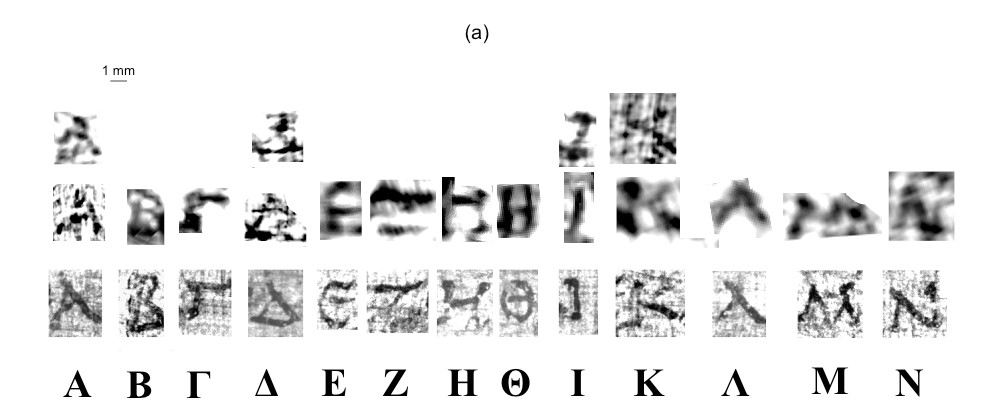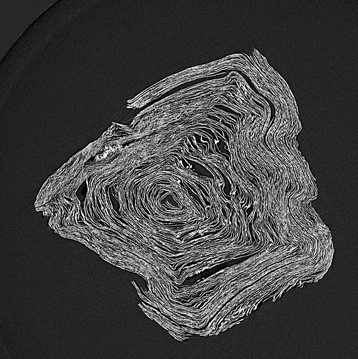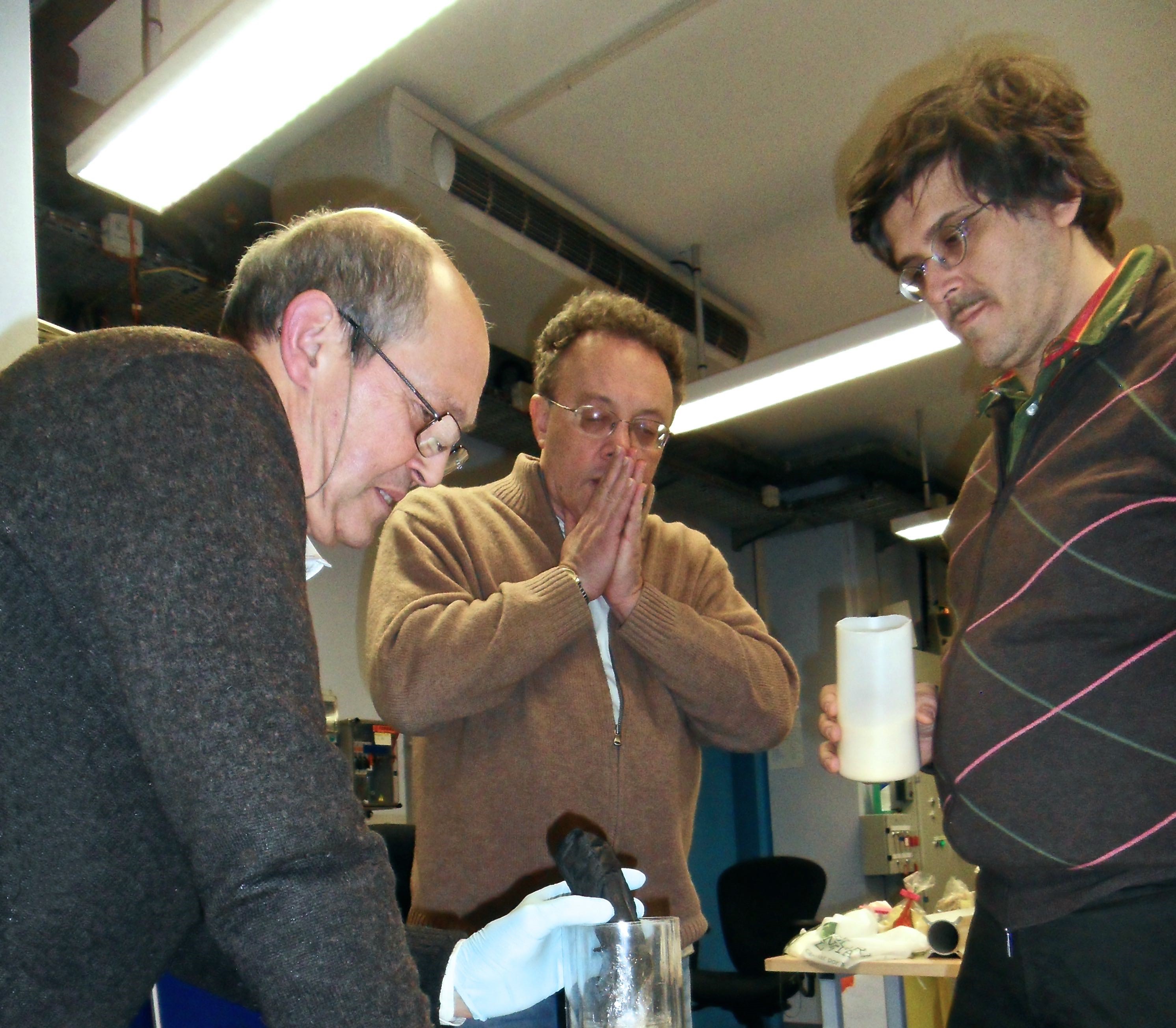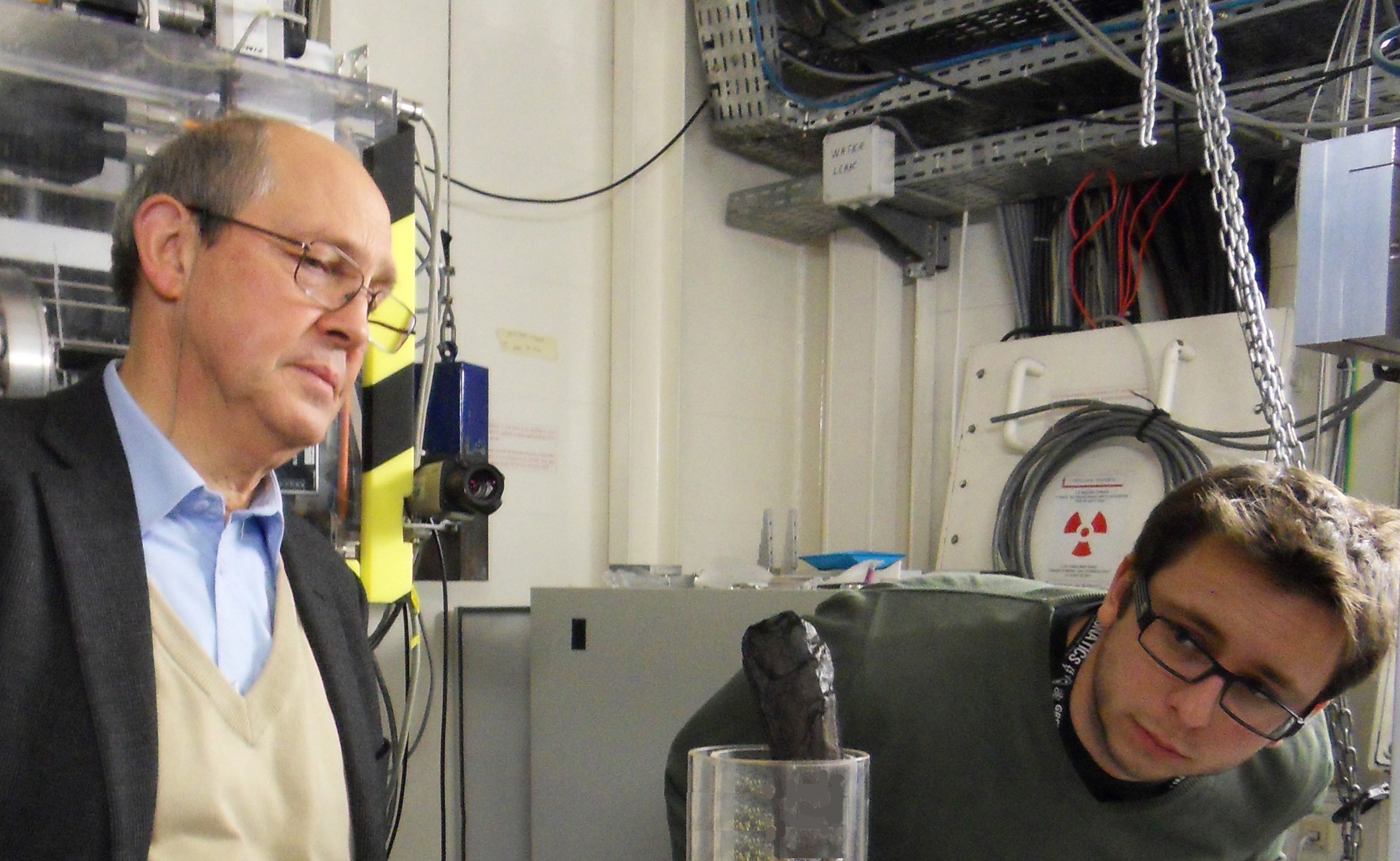- Home
- News
- General News
- Ancient books destroyed...
Ancient books destroyed by the eruption of Mount Vesuvius ‘read’ for the very first time
20-01-2015
Writing that has lain undiscovered for centuries inside a scroll that was charred in the eruption of Mount Vesuvius in 79 AD has been uncovered for the first time. The text, which was written inside a so called ‘papyrus roll’ that was found in the only surviving ancient library, discovered in Herculaneum 260 years ago, has been distinguished using X-rays at the European Synchrotron, the ESRF. The result, by a team from Italian CNR, the ESRF, Ludwig-Maximilian-Universität, and CNRS, is published in Nature Communications (20 January 2015). It offers new possibilities for deciphering hundreds of so far untouched texts, without the damage that can be caused by trying to open them.
Share
In 79 AD several Roman towns were destroyed by the most famous eruption of the volcano, including Pompeii and Herculaneum. The explosion buried these sites under very thick layers of volcanic material and the areas have become a fascination to archaeologists. In 1754 an entire library containing hundreds of carbonised papyrus scrolls carefully stored in shelves covering its walls was discovered. Since then, many attempts have been made to look inside the texts, to enhance our knowledge of ancient Greek literature and philosophy. The problem is that the scrolls are easily damaged by attempts to unroll them and see what is inside. Here, for the first time, letters have been unveiled, without the scrolls needing to be opened.
“After several trials to select the most readable samples from the scanned images, there is no longer any doubt; the dark curves cannot be confused with the papyrus fibres mesh – victory! We can see letters! We can see deformed, or twisted Greek letters! Hurrah! Amazing!” Author on the paper, Daniel Delattre from the CNRS-IRHT-Institut de Recherche et d’Histoire des Textes, describes the moment he first saw the letters.

This shows part of the reconstructed alphabet. The letters identified by the X-ray phase-contrast tomography are on the first and second line . On the third line are the letters obtained by infrared from another papyrus. Comparison of the two alphabets allowed the identification of the writing style. The fourth line shows the Greek characters in uppercase print.
The discovery was made possible because of a technique available at the ESRF, called X-ray phase-contrast tomography (XPCT). The method is extremely successful for distinguishing between materials that have limited contrast to each other. In the case of the ancient texts, the carbonised papyri and the black ink have a similar composition. In Antiquity, papyri were written using a black carbon-based ink obtained from smoke residues, the density of which is almost the same as that of the charred papyrus. This has been a problem during previous non-destructive attempts to unveil the texts.
With the XPCT technique, the X-rays are not only absorbed when passing through matter, but also refracted. This makes it sensitive to the small variation in refraction indices between ink and paper which exist because the ink did not penetrate into the botanic fibers of the paper.

A section of papyrus. Letter sequences are found in a fragment of a hidden layer.
Credit: CNRS-IRHT UPR 841 / ESRF / CNR-IMM Unité de Naples
Using this technique on ESRF’s ID17 beamline, researchers studied two Herculaneum papyri (one fragment and one rolled-up papyrus scroll) from the Institut de France collection. They could extract words which were under several papyrus layers in a fragment and reconstituted an almost complete Greek alphabet from the rolled-up papyrus. By analysing the writing and comparing it with other texts, they were even able to hypothesise that the text could be by the Epicurean philosopher Philodemus, teaching in his Campanian school during the first century before Christ.
Author Emmanuel Brun from the ESRF and the Ludwig-Maximilian-Universität, said: “Without ESRF’s X-rays properties we would not have been able to see inside the Herculaneum scroll without damaging it. This work proves, once again, the extremely high efficiency of Phase Contrast Imaging - now we just have to face the analysis of this huge volume of data”.
The key to this technological breakthrough is that several segments of writing in a rolled-up papyrus could be deciphered without compromising the integrity of the sample.

The team during sample installation in the sample holder. From Left to right D. Delattre, C. Ferrero, V. Mocella. Credit: J. Delattre
Claudio Ferrero from the ESRF, said: “With further refinement of the XCPT technique and other X-ray methods at the ESRF, which we now intend to develop, we believe we would be able to have further enhanced contrast and resolution, allowing more detail to be revealed about ancient texts like the ones we used here in this experiment”.

The team during sample installation before X ray Phase Contrast Imaging . From Left to right D. Delattre, E Brun.
Credit: J. Delattre
Vito Mocella concluded: “We can celebrate that we will eventually be able to read these precious past testimonies while, at the same time, preserving them. Indeed, there will not be any need to unroll the two papyri from the Institut de France and the hundreds scrolls in Naples. This is the beginning of our superb adventure to read lost literature!”
This video demonstrates the process: https://www.youtube.com/watch?v=d3aWBgNYOCU
Top image: Close up photography of Herculaneum Papyrus scroll PHerc.Paris.4. The photographied zone is 5cm. Credit: E. Brun



